Abstract
Penetration times and penetration rates for a motile Bacillus strain growing in nutrient-saturated Berea sandstone cores were determined. The rate of penetration was essentially independent of permeabilities above 100 mdarcys and rapidly declined for permeabilities below 100 mdarcys. It was found that these penetration rates could be grouped into two statistically distinct classes consisting of rates for permeabilities above 100 mdarcys and rates for those below 100 mdarcys. Instantaneous penetration rates were found to be zero order with respect to core length for cores with permeabilities above 100 mdarcys and first order with respect to core length for cores with permeabilities below 100 mdarcys. The maximum observed penetration rate was 0.47 cm · h−1, and the slowest was 0.06 cm · h−1; however, these rates may be underestimates of the true penetration rate, since the observed rates included the time required for growth in the flask as well as the core. The relationship of penetration time to the square of the length of the core suggested that cells penetrated high-permeability cores as a band and low-permeability cores in a diffuse fashion. The motile Enterobacter aerogenes strain penetrated Berea sandstone cores three to eight times faster than did the nonmotile Klebsiella pneumoniae strain when cores of comparable length and permeability were used. A penetration mechanism based entirely on motility predicted penetration times that were in agreement with the observed penetration times for motile strains. The fact that nonmotile strains penetrated the cores suggested that filamentous or unrestricted growth, or both, may also be important.
Full text
PDF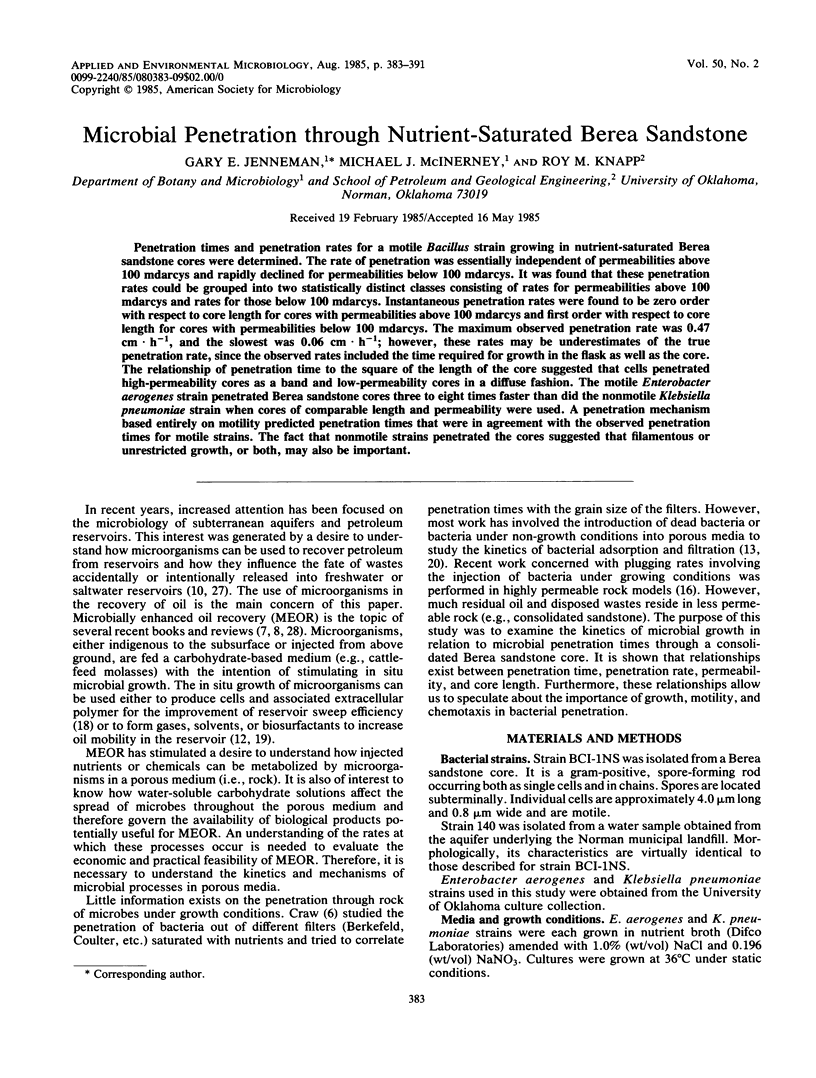
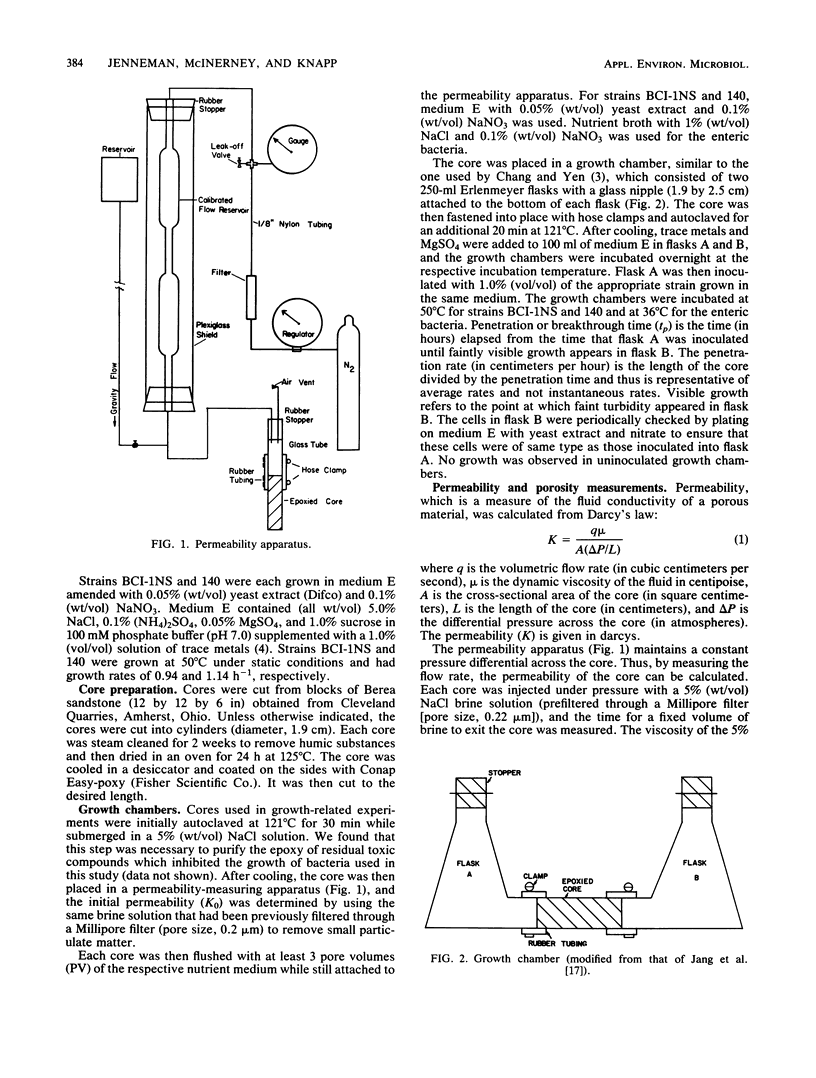
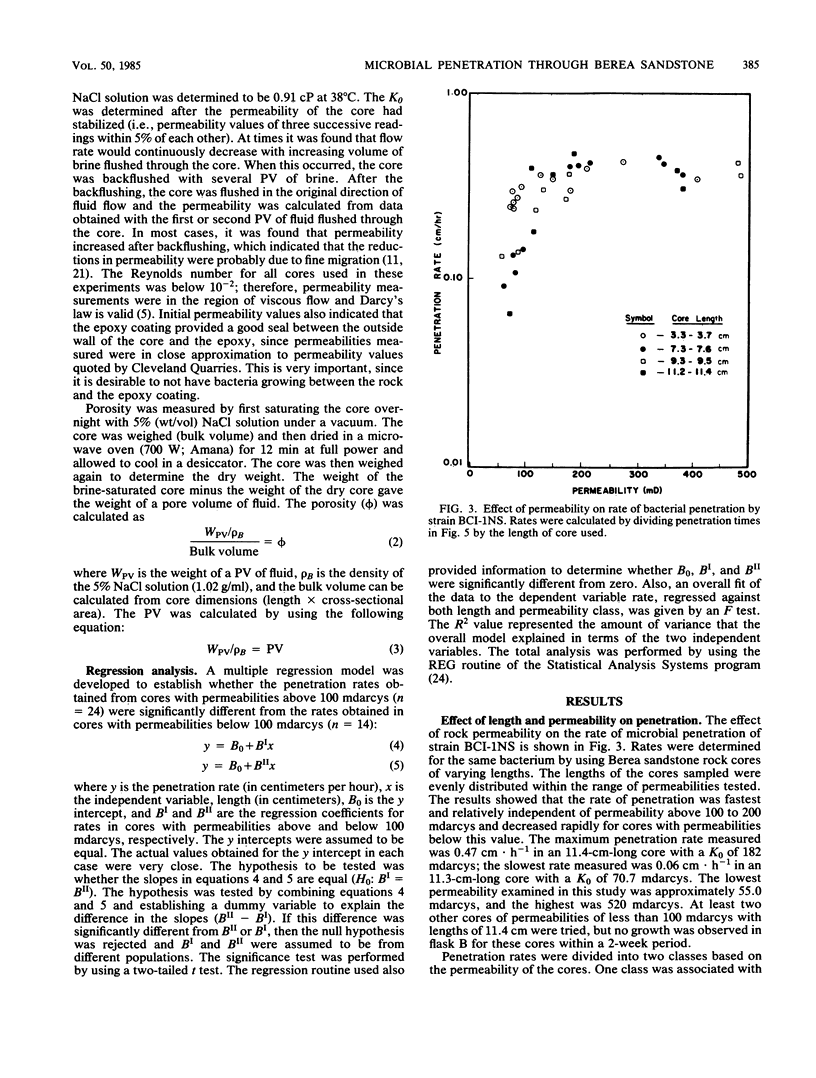
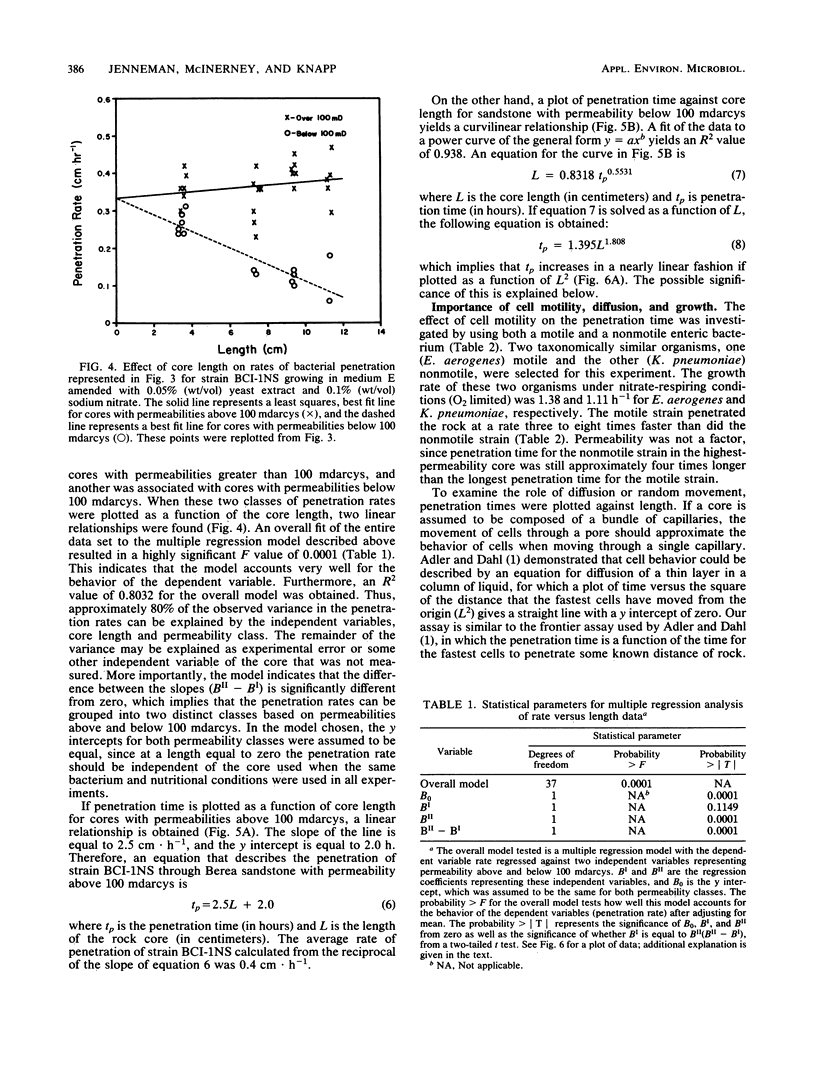

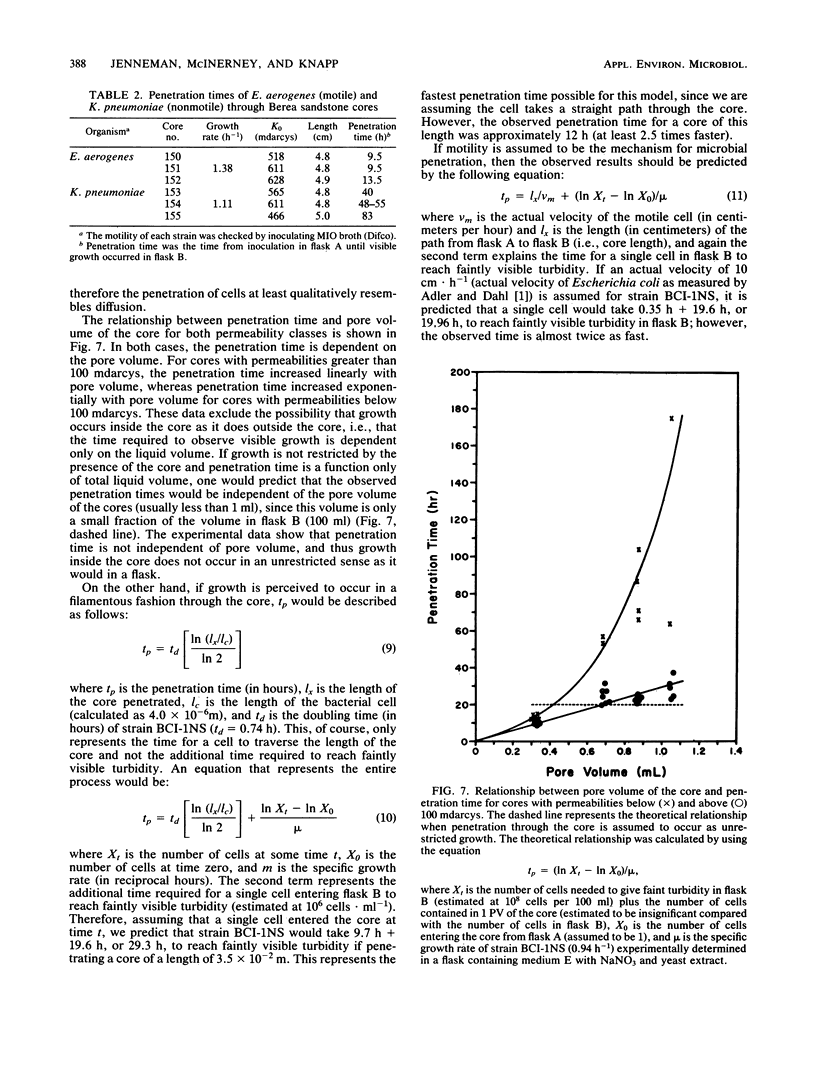

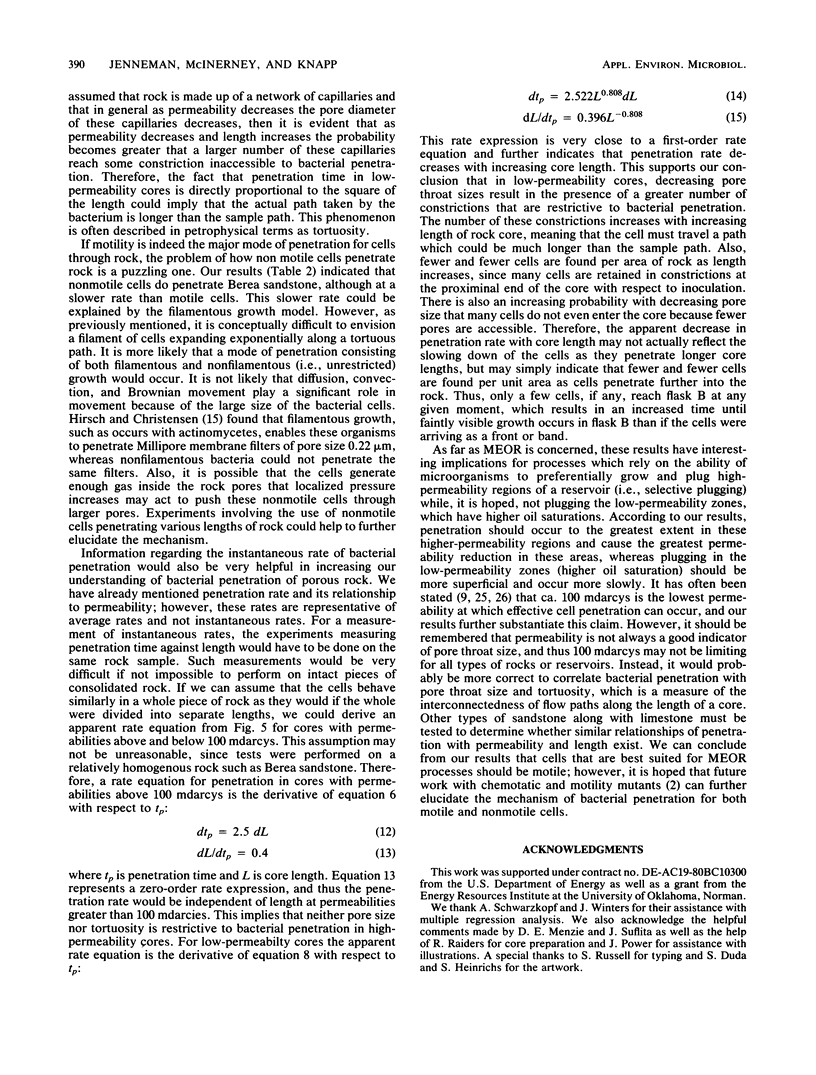

Selected References
These references are in PubMed. This may not be the complete list of references from this article.
- Adler J., Dahl M. M. A method for measuring the motility of bacteria and for comparing random and non-random motility. J Gen Microbiol. 1967 Feb;46(2):161–173. doi: 10.1099/00221287-46-2-161. [DOI] [PubMed] [Google Scholar]
- Armstrong J. B., Adler J., Dahl M. M. Nonchemotactic mutants of Escherichia coli. J Bacteriol. 1967 Jan;93(1):390–398. doi: 10.1128/jb.93.1.390-398.1967. [DOI] [PMC free article] [PubMed] [Google Scholar]
- Chang P. L., Yen T. F. Interaction of Escherichia coli B and B/4 and Bacteriophage T4D with Berea Sandstone Rock in Relation to Enhanced Oil Recovery. Appl Environ Microbiol. 1984 Mar;47(3):544–550. doi: 10.1128/aem.47.3.544-550.1984. [DOI] [PMC free article] [PubMed] [Google Scholar]
- Hirsch C. F., Christensen D. L. Novel method for selective isolation of actinomycetes. Appl Environ Microbiol. 1983 Oct;46(4):925–929. doi: 10.1128/aem.46.4.925-929.1983. [DOI] [PMC free article] [PubMed] [Google Scholar]
- Jang L. K., Chang P. W., Findley J. E., Yen T. F. Selection of bacteria with favorable transport properties through porous rock for the application of microbial-enhanced oil recovery. Appl Environ Microbiol. 1983 Nov;46(5):1066–1072. doi: 10.1128/aem.46.5.1066-1072.1983. [DOI] [PMC free article] [PubMed] [Google Scholar]
- Nazarenko A. V., Nesterov A. I., Pitriuk A. P., Nazarenko V. M. Razvitie metanokisliaiushchikh bakterii v stekliannykh kapilliarakh. Mikrobiologiia. 1974 Jan-Feb;43(1):146–151. [PubMed] [Google Scholar]
- UPDEGRAFF D. M., WREN G. B. The release of oil from petroleum-bearing materials by sulfate-reducing bacteria. Appl Microbiol. 1954 Nov;2(6):309–322. doi: 10.1128/am.2.6.309-322.1954. [DOI] [PMC free article] [PubMed] [Google Scholar]


